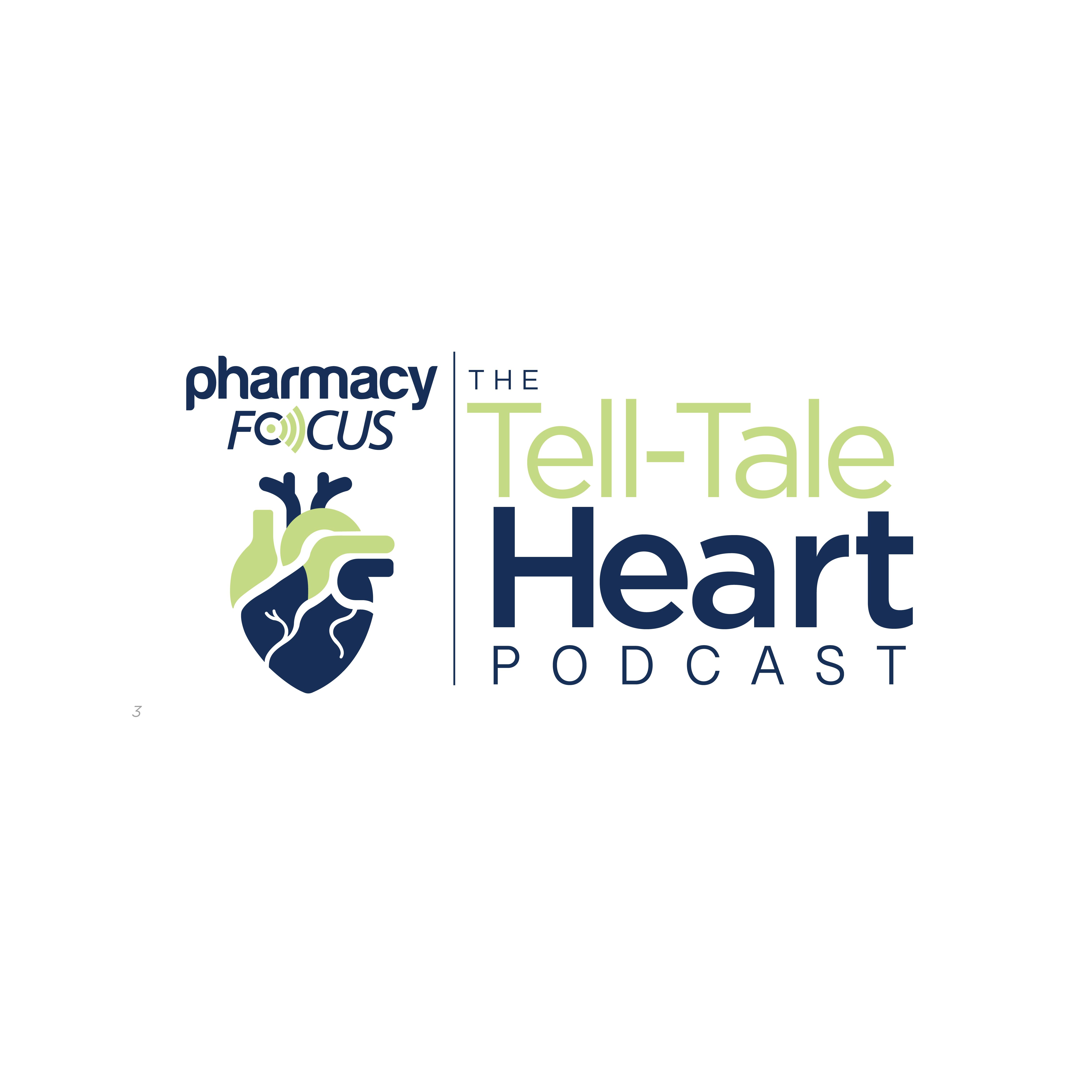Commentary
Article
Highlights From NLA 2025: Early LDL-C Reduction and Emerging Therapies
The 2025 National Lipid Association (NLA) Scientific Sessions highlighted a strategic shift toward early, aggressive cardiometabolic intervention, underscoring the vital role of pharmacists in implementing emerging therapies and optimizing cardiovascular risk reduction.
The 2025 National Lipid Association (NLA) Scientific Sessions in Miami, Florida, highlighted significant advancements in lipid management, cardiovascular risk reduction, and cardiometabolic therapies, showcasing the rapid expansion of the field over the past several years. With a growing body of evidence demonstrating the importance of early intervention and expanded treatment strategies, the meeting underscored a paradigm shift toward timely, aggressive management of atherosclerotic cardiovascular disease (ASCVD) and its associated risk factors.
Pharmacists are uniquely equipped to lead this transformation—bringing clinical expertise, medication accessibility, and patient engagement to the forefront of care. From optimizing statin alternatives and PCSK9-targeted therapies to guiding use of omega-3 fatty acids and incretin-based agents, pharmacists are increasingly central to the multidisciplinary implementation of evidence-based practices that improve outcomes across diverse populations.
Reframing the Timeline: Treat Early, Not Just to Target
Animation of human heart. Image Credit: © tong2530 - stock.adobe.com

New evidence presented at NLA 2025 supported a strategic shift from a “treat-to-target” paradigm to one that also emphasizes “treat-as-soon-as-possible.” Early and aggressive low-density lipoprotein cholesterol (LDL-C) reduction can prevent progression of atherosclerotic burden and ultimately improve cardiovascular outcomes. Pharmacists, often the most accessible health care professionals, are uniquely positioned to initiate and accelerate this care model.
Pharmacists can champion early combination therapy for high-risk patients, counsel with education on the urgency of treatment rather than gradual additions and help streamline post–myocardial infarction protocols within various health systems. The findings point to a future in which pharmacists can implement quality measures to provide rapid treatment and sustainability of LDL reduction with appropriate therapies that translate into cardiovascular risk reductions and preventative cardiology.¹
Icosapent Ethyl in Focus
The NLA sessions also underscored the evolving role of omega-3 fatty acid therapy—specifically icosapent ethyl (Vascepa; Amarin Corporation)—as a part of comprehensive cardiovascular care. Icosapent ethyl has demonstrated cardiovascular benefits in large clinical trials, yet questions remain about how best to integrate it alongside established therapies, such as statins and PCSK9 inhibitors.
Icosapent ethyl exerts cardiovascular benefits through mechanisms beyond lipid lowering, including anti-inflammatory and antithrombotic effects, without significant drug-drug interactions when combined with statins or PCSK9 inhibitors. This makes it a valuable adjunct in managing patients with mixed dyslipidemia or residual cardiovascular risk. For pharmacists, this information is pivotal in guiding evidence-based recommendations, optimizing polypharmacy regimens, and enhancing patient counseling on the multifaceted benefits and safety profile in conjunction with other lipid-lowering agents. There is no evidence to support other agents for reduction of major adverse cardiovascular events (MACE) outcomes. OTC fish oil supplements and mixed eicosapentaenoic acid/docosahexaenoic acid formulations (as used in trials such as ORIGIN [NCT00069784], ASCEND [NCT02475681], STRENGTH [NCT02104817], and VITAL [NCT01169259]) have consistently failed to reduce major adverse cardiovascular events (MACE).²⁻⁵
Icosapent ethyl demonstrates unique anti-inflammatory and antithrombotic mechanisms that enhance cardiovascular protection when added to a statin regimen, as shown in REDUCE-IT (NCT01492361) and JELIS (NCT00231738).²,³ If indicated, referring patients for icosapent ethyl for cardiovascular benefits should be considered. As cardiovascular treatment paradigms continue to advance, pharmacists' expertise in integrating such therapies will be instrumental in improving patient outcomes.
Bempedoic Acid: A Welcome Option for Statin-Intolerant Patients
Bempedoic acid (Nexletol; Esperion Therapeutics) provides an effective option for statin-intolerant patients, not only lowering LDL but also reducing major cardiovascular events and overall cardiovascular risk. Data presented at NLA 2025 showed significant reductions in LDL-C levels and cardiovascular events among statin-intolerant individuals, making it an evidence-based alternative that is now reflected in updated guidelines.⁶ Pharmacists can lead efforts to incorporate bempedoic acid into treatment algorithms and counsel patients who experience muscle-related adverse effects (AEs) on statins. Further, pharmacists involved in collaborative practice can be instrumental in managing lipid therapy for patients at high risk for or with a history of ASCVD.
Inclisiran: Twice-Yearly LDL-C Control With Practice Implications
Inclisiran (Leqvio; Novartis), a small interfering RNA targeting PCSK9 synthesis, was highlighted for its ability to achieve rapid and sustained LDL-C reduction, particularly when initiated soon after an acute coronary syndrome event. In recent trials, 54% of patients on inclisiran reached LDL-C targets (≤55 mg/dL) compared to 13.6% with standard care.⁷ Although long-term cardiovascular outcome data are expected in 2026 to 2027, preliminary MACE data are promising.
Inclisiran’s twice-yearly dosing may offer an adherence advantage, especially for patients who struggle with daily regimens. However, pharmacists will need to support proper documentation, billing, and site-of-care coordination, since inclisiran is billed through the medical benefit rather than the pharmacy benefit pathway typically used for statins or PCSK9 monoclonal antibodies.
Incretin Therapies: A Complication-Centric Model
Incretin-based therapies such as semaglutide (Ozempic, Wegovy; Novo Nordisk) have had a major impact on diabetes and overweight/obesity with transformative risk reduction for cardiovascular and renal events. These agents have demonstrated risk reduction in cardiovascular disease, heart failure, metabolic-associated steatohepatitis, and peripheral artery disease.⁸
Pharmacists should advocate for a complication-centric treatment approach, integrating all relevant comorbidities—rather than focusing solely on A1c or body mass index—when recommending therapy. As prescribing expands, pharmacists must also lead patient counseling on gastrointestinal AEs, drug interactions, and titration, as well as help navigate affordability and insurance coverage challenges.
Conclusion
As highlighted throughout the 2025 NLA Scientific Sessions, the expanding landscape of lipid and cardiometabolic therapies presents pharmacists with unprecedented opportunities to impact clinical outcomes. Whether by initiating early LDL-C–lowering strategies, optimizing use of evidence-based agents such as icosapent ethyl and bempedoic acid, navigating administration and reimbursement pathways for novel agents such as inclisiran, or personalizing care with incretin-based therapies, pharmacists are essential to the successful translation of emerging science into practice.
Their accessibility, medication expertise, and patient-centered perspective uniquely position them to close implementation gaps, promote adherence, and advance value-based care models. As therapeutic innovation accelerates, so too must the proactive engagement of pharmacists in multidisciplinary cardiovascular and metabolic care teams—delivering on the promise of prevention, precision, and population health.
REFERENCES
Hippensteele A. NLA 2025: The earlier LDL cholesterol is lowered, the greater the cardiovascular risk reduction. Pharmacy Times. June 1, 2025. Accessed July 2, 2025. https://www.pharmacytimes.com/view/nla-2025-the-earlier-ldl-cholesterol-is-lowered-the-greater-the-cardiovascular-risk-reduction
Bhatt DL, et al. Cardiovascular risk reduction with icosapent ethyl for hypertriglyceridemia. N Engl J Med. 2019;380(1):11-22.
Yokoyama M, et al. Effects of eicosapentaenoic acid on major coronary events in hypercholesterolaemic patients. Lancet. 2007;369(9567):1090-1098.
ORIGIN Trial Investigators, Bosch J, Gerstein HC, et al. n-3 fatty acids and cardiovascular outcomes in patients with dysglycemia. N Engl J Med. 2012;367(4):309-318. doi:10.1056/NEJMoa1203859
Nicholls SJ, et al. Effect of high-dose omega-3 fatty acids vs corn oil on major adverse cardiovascular events in patients at high cardiovascular risk: the STRENGTH trial. JAMA. 2020;324(22):2268-2280.
Nissen SE, Hippensteele A. NLA 2025: Bempedoic acid supports ASCVD prevention and LDL-C reduction. Pharmacy Times. June 2, 2025. Accessed July 2, 2025. https://www.pharmacytimes.com/view/nla-2025-bempedoic-acid-for-ascvd-prevention-and-ldl-c-reduction
Halpern L. NLA 2025: Inclisiran with standard care provides rapid, sustained lowering of LDL-C in patients with recent acute coronary syndrome. Pharmacy Times. May 30, 2025. Accessed July 2, 2025. https://www.pharmacytimes.com/view/nla-2025-inclisiran-with-standard-care-provides-rapid-sustained-lowering-of-ldl-c-in-patients-with-recent-acute-coronary-syndrome
Hippensteele A. NLA 2025: Practical strategies for identifying the right patient for incretin therapy. Pharmacy Times. June 1, 2025. Accessed July 2, 2025. https://www.pharmacytimes.com/view/nla-2025-practical-strategies-for-identifying-the-right-patient-for-incretin-therapy
Newsletter
Stay informed on drug updates, treatment guidelines, and pharmacy practice trends—subscribe to Pharmacy Times for weekly clinical insights.






